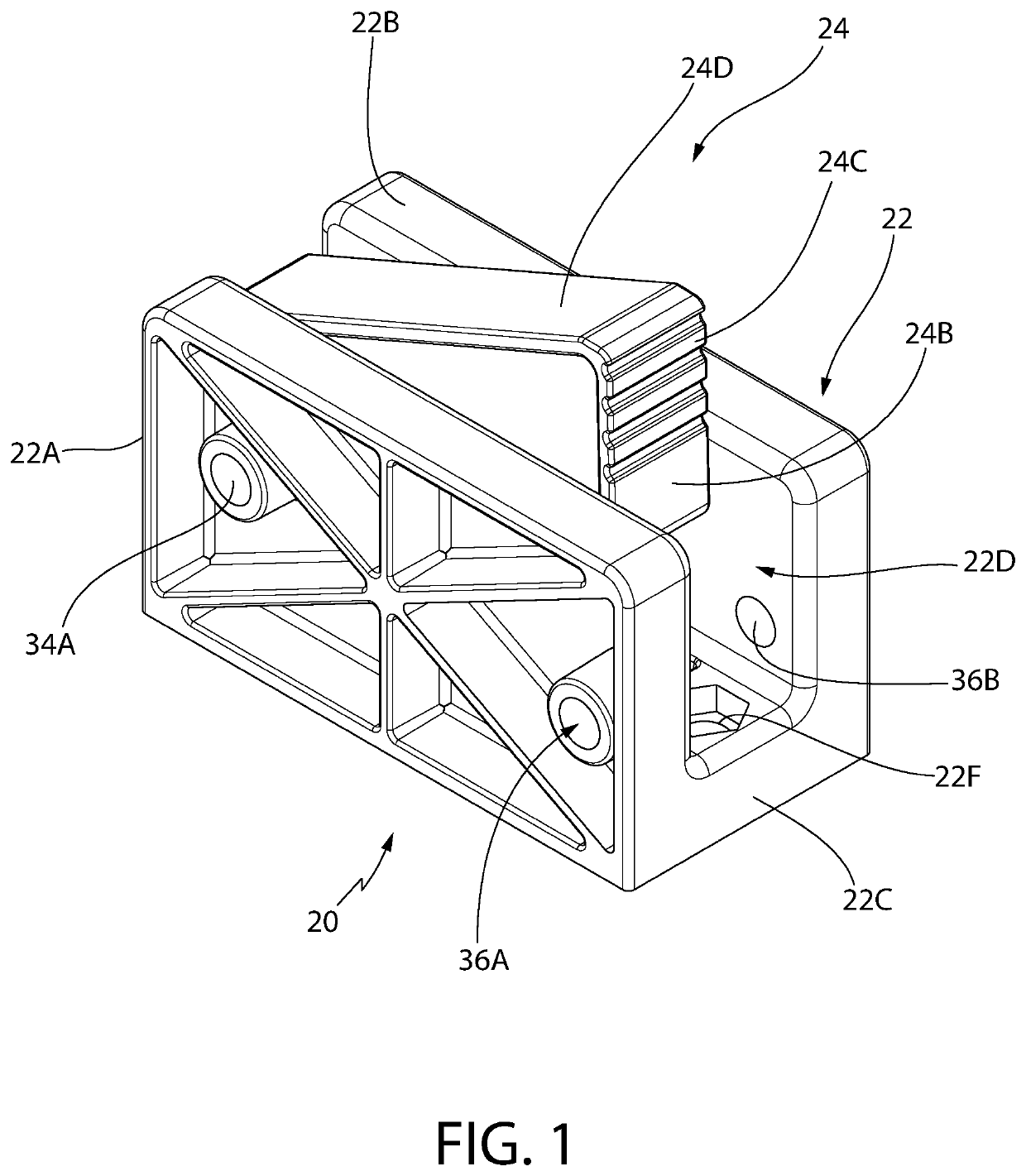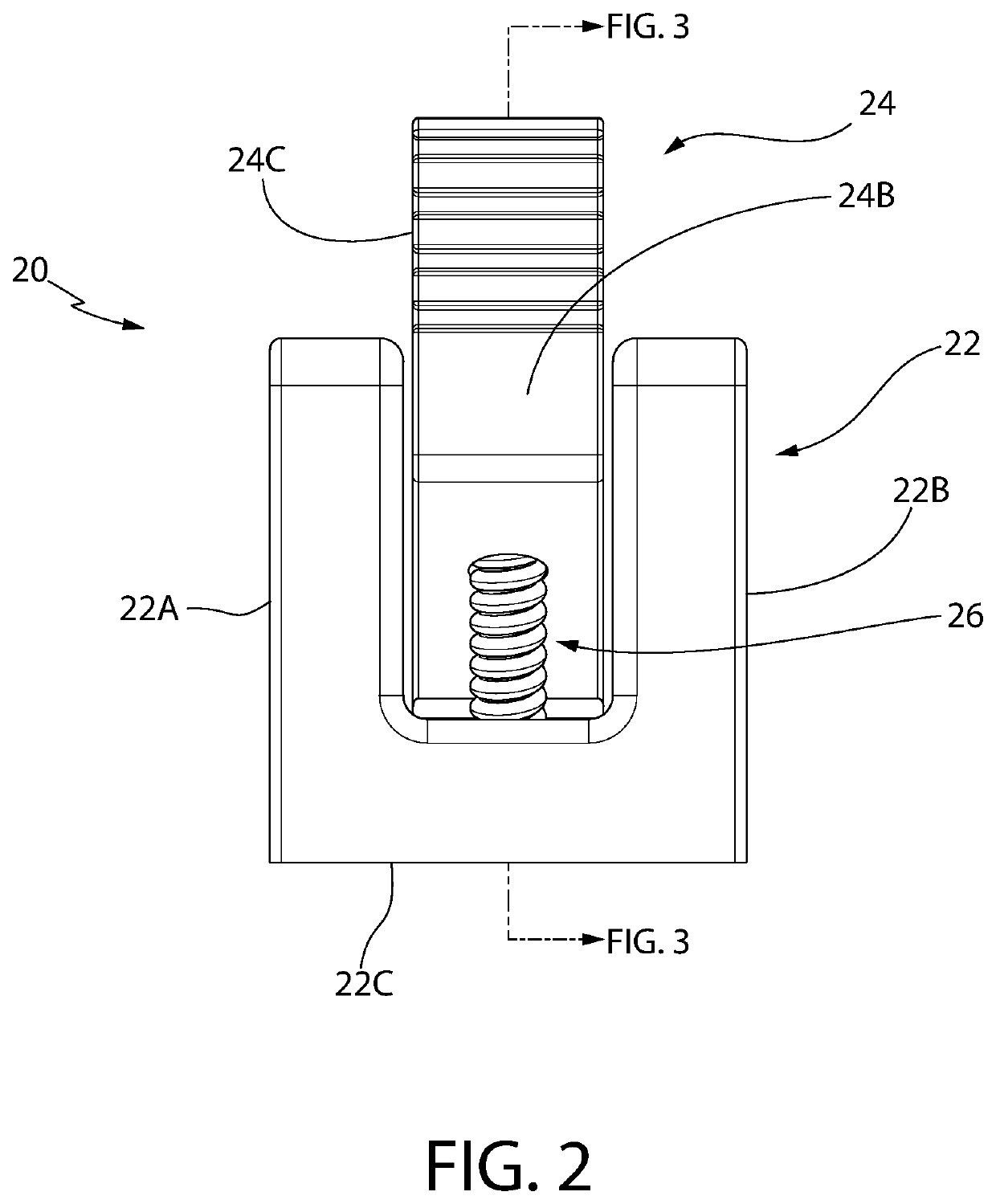Apparatus and method for a self-activating stop for preventing watercraft from sliding off towing trailers
- Summary
- Abstract
- Description
- Claims
- Application Information
AI Technical Summary
Benefits of technology
Problems solved by technology
Method used
Image
Examples
Embodiment Construction
[0022]Referring now to the figures, wherein like reference numerals represent like parts throughout the several views, exemplary embodiments of the present disclosure will be described in detail. Throughout this description, various components may be identified having specific values, these values are provided as exemplary embodiments and should not be limiting of various concepts of the present invention as many comparable sizes and / or values may be implemented.
[0023]The self-activating stop device (SASD) 20 of the present invention is shown most clearly in FIG. 1. The SASD 20 is designed for mounting on watercraft towing trailers to prevent the watercraft (e.g., a boat) from sliding back off the towing trailer during transfer (i.e., loading and launching) of the boat from the water, or from a storage location, etc. As will discussed in detail later, the SASD 20 is designed for use on a variety of watercraft towing trailers that can be generally divided into two categories: salt-wa...
PUM
 Login to View More
Login to View More Abstract
Description
Claims
Application Information
 Login to View More
Login to View More - R&D
- Intellectual Property
- Life Sciences
- Materials
- Tech Scout
- Unparalleled Data Quality
- Higher Quality Content
- 60% Fewer Hallucinations
Browse by: Latest US Patents, China's latest patents, Technical Efficacy Thesaurus, Application Domain, Technology Topic, Popular Technical Reports.
© 2025 PatSnap. All rights reserved.Legal|Privacy policy|Modern Slavery Act Transparency Statement|Sitemap|About US| Contact US: help@patsnap.com



